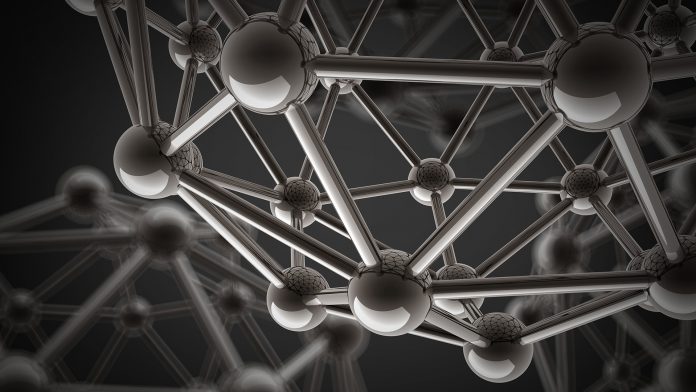Rob Adlard, Founder & CEO of Gravitilab, outlines the role of materials science research in microgravity.
Materials science is a discipline that investigates the properties and behaviours of various materials, including metals, ceramics, polymers, and composites. This field has long been fundamental to technological advancements, significantly shaping the world we inhabit. However, to drive innovation, it is sometimes necessary to explore how materials perform beyond Earth’s environment and examine their behaviour under unique conditions of microgravity.
Microgravity is a state where gravity’s effects are greatly reduced, causing objects and people to experience weightlessness. This is often seen in space, where astronauts and objects float because gravity’s influence is minimal. On Earth, microgravity can be simulated under certain conditions, such as on parabolic flights. In these flights, an aeroplane follows a series of up-and-down parabolic paths, and at the peak of each curve, passengers and objects inside the plane experience about 20-30 seconds of free fall, creating microgravity.
Another emerging method for creating microgravity involves using advanced technology that releases a patented special pod from an uncrewed aerial vehicle (UAV) at a specific height. During the pod’s powered and controlled descent, microgravity conditions are created and this provides an affordable and accessible way to conduct microgravity research and testing. For longer durations of microgravity and access to space environments, suborbital rockets are being developed and utilised to deliver larger payloads of materials for research and testing.
Microgravity and space environments present distinct properties that influence materials in ways that cannot be reproduced on Earth. In these conditions, we can understand the behaviour of materials in new ways, and use this knowledge to develop completely new materials and technologies. This presents exceptional opportunities for breakthroughs capable of transforming industries and enhancing life on Earth.
3D printing
One area of materials science that has been significantly influenced by access to microgravity and space environments is additive manufacturing, commonly known as 3D printing. 3D printing is an innovative process of creating three-dimensional objects from digital models by consecutively layering materials. The absence of physical effects due to microgravity in space, (for example buoyancy) enables the formation of more complex and intricate structures, as the materials are not subject to the same gravitational forces experienced on Earth.
The potential of 3D printing in microgravity environments was first demonstrated in 2018 when the inaugural 3D printer was sent to the International Space Station (ISS) as part of a collaborative effort between NASA and Made In Space, a private company. This printer is capable of producing plastic parts, tools, and medical supplies under microgravity conditions. The introduction of this technology in space has the potential to revolutionise space travel, enabling astronauts to print replacement parts and tools on demand, significantly reducing the need for resupply missions from Earth.
3D printing in microgravity also offers the potential for the development of advanced materials designed specifically for use in space. These materials could possess unique properties that are advantageous in the harsh conditions of space, such as improved strength, thermal resistance, or radiation shielding.
Creation of new materials
Another area where materials science has been profoundly influenced by microgravity and space environments is in the discovery and development of new materials. Space presents a unique set of challenges, as materials are subjected to extreme temperatures, radiation, and other environmental factors that are not present on Earth. These extraordinary conditions can give rise to new materials with remarkable properties that are unattainable under terrestrial circumstances.
One such example occurred in 2016 when researchers at NASA’s Glenn Research Center discovered a groundbreaking material called “superblack.” This material, which absorbs an astonishing 99% of all light that comes into contact with it, was developed by growing carbon nanotubes on a surface in microgravity conditions. The unique properties of superblack have applications in an array of technologies, such as space telescopes and other imaging systems that require high levels of light absorption.
Advanced composites
This discovery of new materials extends to the development of advanced composites. Composites are materials that consist of two or more distinct components combined to create a new material with enhanced properties. These materials often exhibit improved strength, durability, and resistance to various environmental factors, making them ideal candidates for use in challenging environments, such as space.

The testing of composites under space conditions has led to several breakthroughs in the development of advanced composites that are specifically tailored for use in space exploration and related applications. One notable example occurred in 2017 when researchers at NASA’s Glenn Research Center developed a new composite material made from carbon nanotubes and epoxy. This innovative material boasts a strength that is ten times greater than steel, while only weighing a fraction of its mass.
Atomic and molecular exploration
Finally, microgravity and space environments have proven to be invaluable in the study of materials at the atomic and molecular level. In space, materials can be studied without the interference of Earth’s gravity, which typically impacts the behaviour of atoms and molecules. This has led to a deeper understanding of the fundamental properties of materials, encompassing their mechanical, thermal, and electrical characteristics, and paving the way for innovative applications and discoveries.
For instance, in 2018, researchers at the European Space Agency utilised microgravity to examine the behaviour of colloids, which are minuscule particles suspended in a liquid. The study revealed that the behaviour of colloids in microgravity significantly differed from their behaviour on Earth. This finding led to new insights into the behaviour of materials at the atomic and molecular level, opening up new avenues for exploration and potential applications. Additionally, the study of materials in microgravity has contributed to advancements in fields like biotechnology and pharmaceuticals. For example, researchers have been able to observe how proteins crystallise in microgravity, which has led to the development of better drug delivery systems and more effective treatments for various diseases.
A bright future for materials science
Ultimately, the study of materials science in microgravity is unlocking new frontiers, innovating the future of technology and improving the quality of life on Earth. Examining materials’ behaviour under microgravity will lead to more groundbreaking discoveries in 3D printing, new materials, advanced composites, and atomic and molecular science.
However, the success of materials science research in microgravity hinges on strong collaboration between space agencies, academia, and industry. Policymakers and legislators must recognise the importance of microgravity research and support policies fostering innovation in this area. Investment and funding for microgravity research initiatives must be prioritised to ensure continued advancements in materials science. With the right support, microgravity research will remain a driving force behind new discoveries and applications with revolutionary potential.





